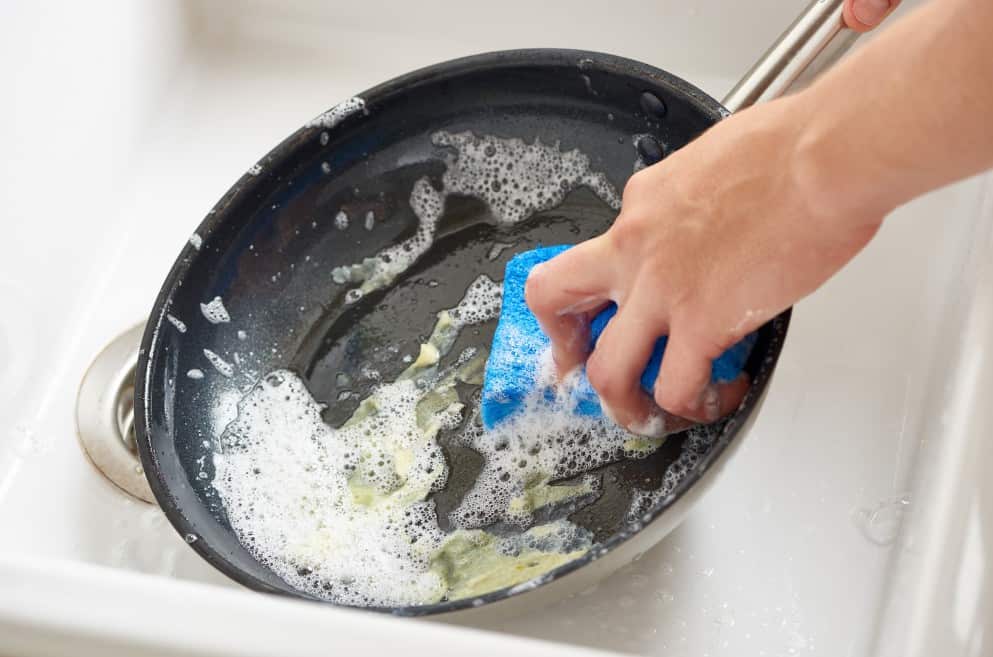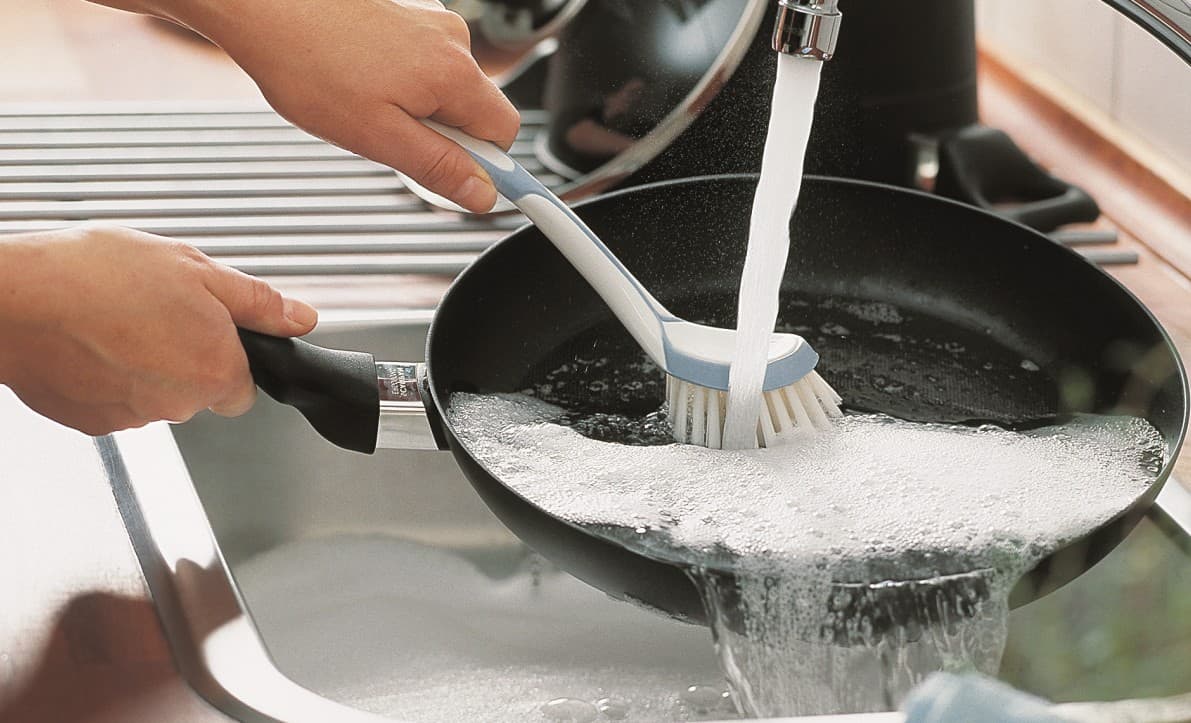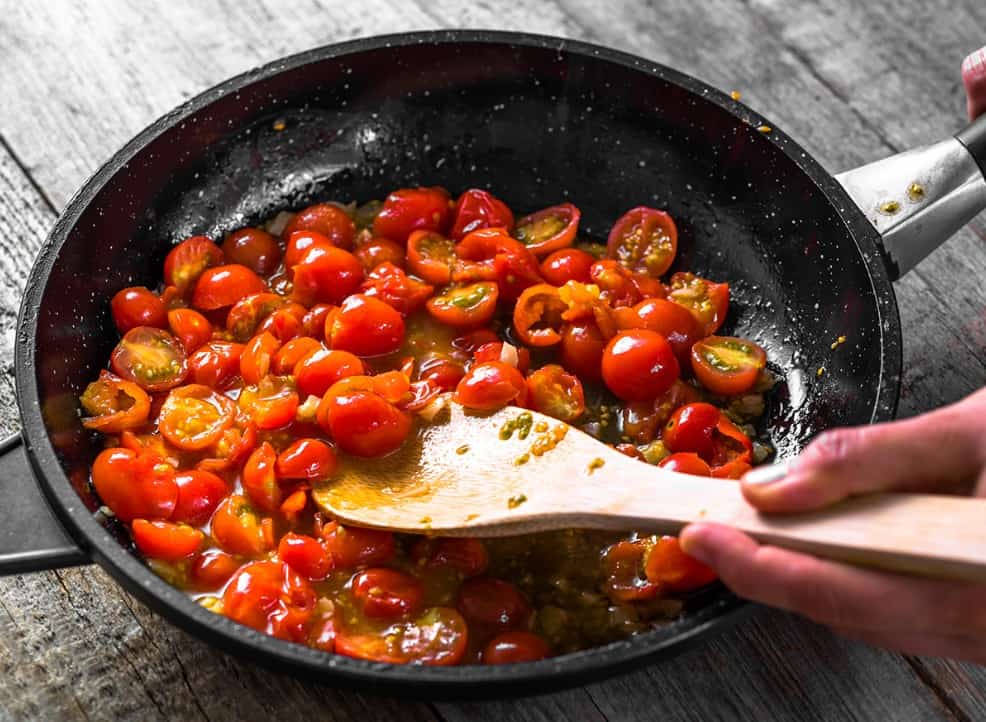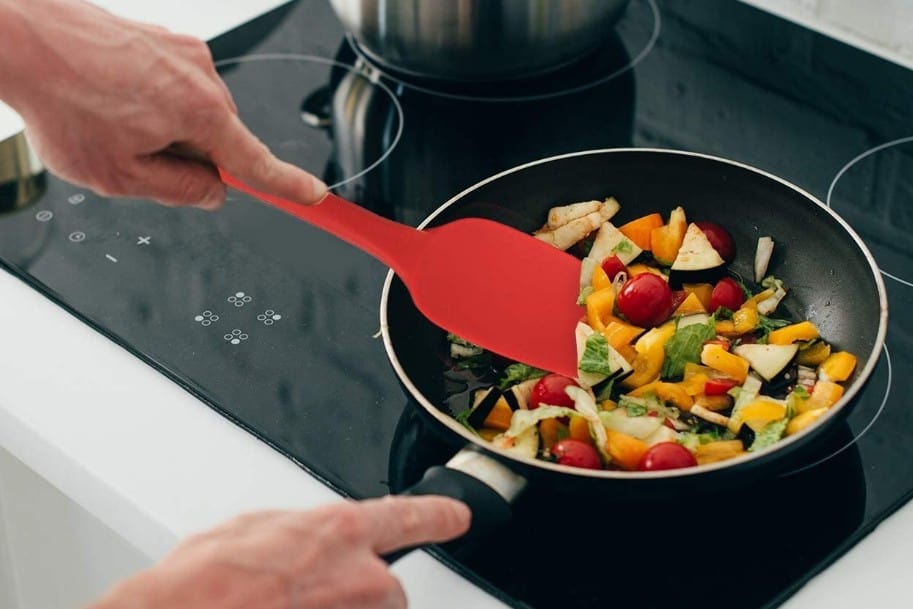For a person in charge of cooking, having a nonstick cooking pan will be one of their wishlists. But, they should be responsible enough to know how to take care of their cooking tools. If you recently started cooking, one of the skills you need to learn is how to clean a nonstick pan.
What is nonstick cookware?

All nonstick cookware is coated with PTFE, also known as Polytetrafluoroethylene. The standard and famous chemical coating brand name is Teflon. Teflon is made out of fluorine and carbon atoms, both of which are elements used in creating this synthetic compound. This is most commonly found in cookware, but PTFE can also be used to coat other daily-use materials, making them both water-resistant and non-sticky.
The pan’s nonstick surface properties make it convenient to use and make it easier to clean compared to other cookware made of different materials other than Teflon.
Despite its good feedback, the nonstick cookware has always been subject to health and safety concerns for the past years. However, the PFOA has always been the primary source of health concern for nonstick cookware. PFOA is also known as perfluorooctanoic acid.
The chemical properties of the Teflon coating used to contain PFOA, which helps to produce nonstick cookware, but the operations to use this was halted long ago.
A few reasons why some consumers think that Teflon-coated cookware is not safe to use is when the flaking of the Teflon coat starts to occur and has been accidentally ingested by the consumers.
Undeniably, this could happen to nonstick cookware that is way cheaper. Hence, having poor quality in production.
5 steps on how to clean a nonstick pan

Regardless of whether you are a cook or a baker by profession or by heart, you understand the rule of maintaining proper and good kitchen hygiene. One of those good practices is to clean all the kitchen cookware and utensils after use.
It not only assists in having a clean working area, but it can also help you avoid any health concerns that may occur due to a filthy workspace.
Follow the easy step by step process on how to clean a nonstick pan below:
Allow the pan to cool down
After you cook, give it a little time for the nonstick pan to cool down before cleaning it. This is a recommended habit of avoiding thermal shock that can make it warp when splashed with intensely cold water while still boiling.
Brush or scrub the pan
Apply a generous amount of liquid dishwashing soap onto your cleaning sponge or soft-bristled brush and splash a tiny amount of water, dilute it and form bubbles.
Graciously scrub the surface of the nonstick pan using the sponge in a circular motion as well as the handle and the back to clean it thoroughly.
Make sure that you are not using a non-abrasive sponge or brush to avoid scratching the surface of the pan and end up removing the chemical coating that makes it nonstick.
Liquid dishwashing soap is the only recommended cleaner. Toxic and harsh cleaners such as bleach and oven cleaners can cause further damage to the surface of the pan.

Thoroughly rinse the pan
Ensure that you thoroughly rinse a pan under running water until you no longer see any bubbles or soap residue.
Treat the burnt areas
Ensure that you treat the burnt areas even after you have washed the nonstick pan but still find out that there are remaining stubborn burnt spots.
You can treat these burnt spots by making a paste. To do this, sprinkle a generous amount of kosher salt onto the affected area and a dash of water. Use the cleaning sponge to drive out the burnt stains.
Again, please do not use any abrasive brush or rub it a little too hard to avoid scratching the chemical coating.
Rinse the pan after you have entirely removed the burnt stains. Dry it by wiping it with a paper towel or a dishcloth.
Condition the pan
Once you are done cleaning the nonstick pan, do not forget to season it using cooking or vegetable oil and a paper towel. Wipe off the excess oil with a paper towel.
Watch the video below to learn more about how to clean a non-stick pan
6 Tips on how to take care of your nonstick pan
Take care of your nonstick pans by avoiding any scratches that damage the chemical coating. The coating is what makes it nonstick. Thus, it makes it easier for you to cook and clean after every use.
It is essential that you know how to take care of your nonstick pan by doing the proper method of cleaning it.
As humans, we tend not to notice the common mistakes we usually make, especially when we think we are not damaging the cookware. Proper care of the nonstick cookware dramatically affects the longevity of its use.
Watch the video below to find out if you might have been doing the same mistakes to your nonstick pan:
Below are the tips you need to keep in mind to properly care the nonstick pan:
Avoid using Cooking Spray
A cooking spray is not meant for a nonstick pan. It is not recommended to be used to maintain the goodness of the cookware. Using cooking spray on your nonstick pan may cause severe damage.
Avoid high heat temperature
Do not leave your nonstick pan at a high heat temperature without oil or water, leaving it to dry, which may cause damage to the surface coating.
Moreover, when you use olive oil, make sure that the burning temperature is low. Similarly, don’t place your nonstick pan in an oven unless the cookware manufacturer states that it is oven safe.
Avoid using dishwasher
Though it can be tempting to choose the most convenient way of cleaning kitchenware, which is to use the dishwasher, it does not mean that it is recommended for specific types of cookware. One of those sensitive to dishwashers is nonstick cookware.
Even if the care-instruction manual tells you that your nonstick pan is dishwasher safe, it is still best to take precautions as it is not worth the risk. Nonstick pans are made out of delicate materials. Moreover, it also has a chemical coating providing its nonstick properties.
The intense wash cycle in the dishwasher can significantly affect the nonstick pan, especially its coating. Handwashing is still the best option to clean your nonstick cookware.

Avoid using Steel Wool
It has been mentioned countless times to avoid using abrasive cleaning tools such as steel wool. Its rough and spiky texture will scratch the surface of your nonstick pan that can cause the removal of the coating.
Use a paper towel or dishcloth to dry the nonstick pan surface
Do not let it air dry, and use a paper towel or a dishcloth instead. Ensure that the pan is thoroughly cleaned and all the oil residue is wiped out to prevent oxidation.
Use dishcloth or paper towel in between each pan
Make sure that you use a dishcloth or a paper towel to be placed in between each pan. This is recommended if you intend to place the pan on top of each other. This is necessary for you to avoid damaging the surface of the nonstick pan.
Recommended cooking utensils to use with a nonstick pan

Though, understandably, you may tend to get hyped up when you find out that your mom has bought a Teflon pan. So, for someone who is assigned to do the dishes, undeniably, it will be your sigh of relief as nonstick pans come with a Teflon coating, which makes it easier and quicker to clean than regular pans.
However, nonstick pans tend to be sensitive due to the Teflon coating. It does not go well with kitchen utensils made of metals or stainless steel. It tends to scratch the coating off the pan, unintentionally ruining its nonstick properties.
Below are the recommended kitchen utensils you can use with your nonstick pan:
Bamboo and Wood
The most recommended kitchen utensils to use for your nonstick pan should be made out of bamboo and wood. It does not scratch the surface of your pan, unable to remove the chemical coating that makes it nonstick.
Moreover, wooden spoons and spatulas will neither melt nor cause a fire, even if you accidentally forgot that you left them somewhere near the stove. However, they are high maintenance as they are prone to a hideout for bacteria because they are porous.
Nylon
Nylon kitchen utensils are also recommended and safe to use for your nonstick pan. Spatulas made of nylon are safe to use and versatile when cooking, regardless of whether it is just an egg or any other meat.
It is also known to be more durable compared to wooden kitchen utensils. It is low maintenance and can be cleaned using a dishwasher.

Silicone
Another recommended utensil to use for your nonstick pan is kitchen utensils made of silicon. These are highly resistant to heat. Thus, they do not melt even when left beside the stove or nonstick cookware.
Silicone kitchen utensils are low maintenance and easy to clean. Just make sure not to clean it with rough cleaning pads to prevent scratching the surface.
Hybrid
Hybrid kitchen utensils are made out of stainless steel and silicone material. The characteristics of these two materials are combined, thus, making the hybrid kitchen utensil sturdier, reliable, functional, and versatile. It has the strong properties of stainless steel yet has the softness and gentleness of a food-grade silicone material.
Summary
It is essential that you know how to properly care for your kitchen cookware, such as the nonstick pan. Though, your nonstick pan may not last for more than seven years. At least, you can still maximize its use and the money you have spent for it if you know how to clean a nonstick pan after use.


Michael Johnson is the founder of Pan Mastery, Inspired by his blacksmith grandfather’s legacy has a deep appreciation for hand-crafted pots and pans, he provides invaluable guides, reviews, and recipes to enhance your culinary journey.
